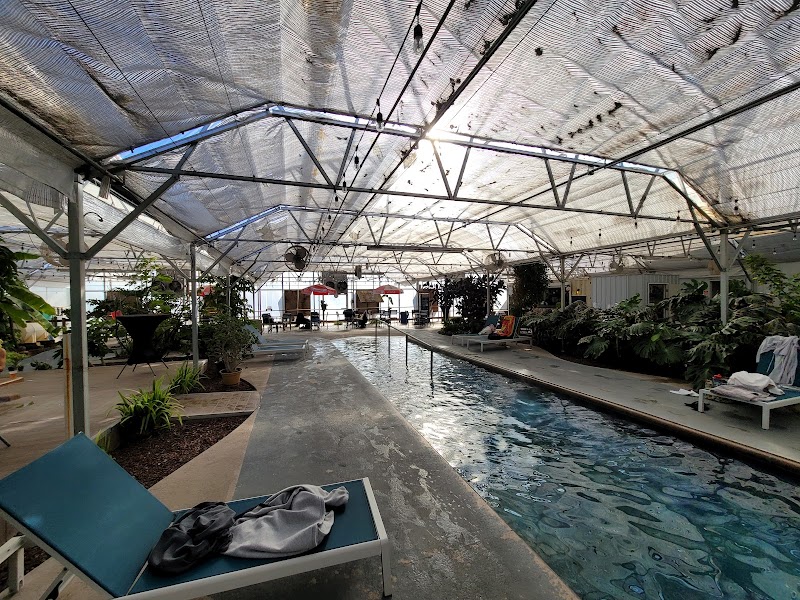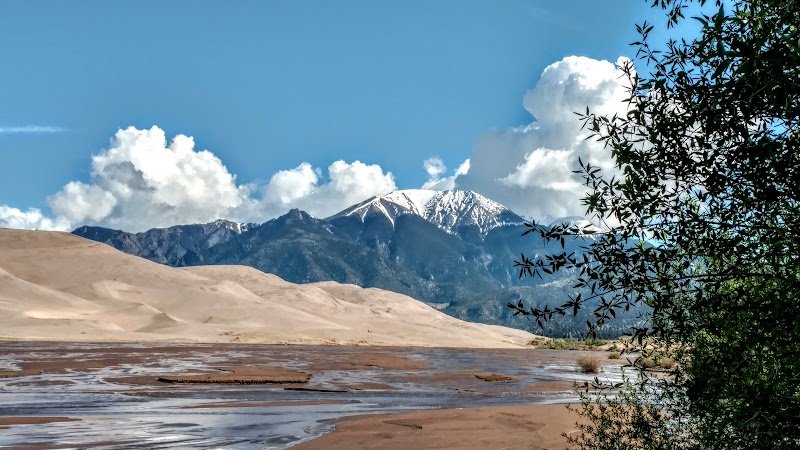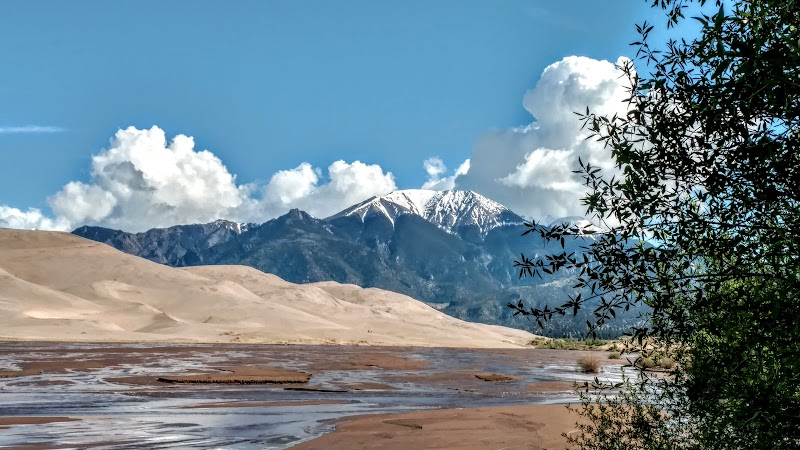Welcome to Great Sand Dunes National Park
Step into a world unlike any other: the Great Sand Dunes National Park. Home to the tallest dunes in North America, these stunning sandscapes create an awe-inspiring spectacle that reaches a staggering 750 feet. Here, the beauty of starlit nights rivals the splendor of sunlit dunes. From the panoramic vistas of Medano Pass to the serene waters of Medano Creek, this park promises endless adventure. But to truly unlock the wonders of this unique landscape, a comprehensive tourist map of Great Sand Dunes National Park is essential.
Booking.comExploring the Wonders of Great Sand Dunes National Park
Imagine standing at the foot of a towering sand dune, feeling the soft grains beneath your feet and the gentle breeze on your face. That's exactly what awaits you at the Great Sand Dunes National Park, a place where nature's grandeur is on full display. This park offers a unique and adventurous experience, from the thrill of sandboarding and sledding to the serenity of nature walks or stargazing in one of America's quietest skies.
Must-See Attractions at Great Sand Dunes National Park
The park is ready for you to explore, with numerous highlights that should not be missed:
- High Dune: The tallest dune in the park, it offers a unique and challenging hike with an unforgettable view.
- Zapata Falls: A hidden gem tucked away in the mountains, it provides a refreshing contrast to the sandy landscapes.
- Montville Nature Trail: A peaceful walking trail that offers stunning views of the dunes and the Sangre de Cristo Mountains.
- Dune Field: The heart of the park, where you can try sandboarding or sledding.
- Visitor Center: A place to learn about the park's history, geology, and wildlife.
The Dune Field: A Sandy Playground
Stepping into the Dune Field feels like entering another world. This desert landscape is a playground shaped by wind and water, constantly shifting and ever-changing. As you carve your way down the dunes, sandboarding or sledding, you'll feel an exhilarating sense of freedom that only comes from playing in nature's sandbox.
High Dune: The Challenge of the Climb
For a unique adventure, look no further than the High Dune. Standing as the tallest dune in the park, it reaches a height of about 700 feet. The climb may be challenging, but the view from the top, overlooking a sea of sand against the backdrop of alpine peaks, is truly unforgettable. This is an experience that you'll carry with you long after leaving the park.
Zapata Falls: An Oasis in the Desert
Zapata Falls offers a refreshing contrast to the sandy landscapes. Located a short drive from the park, this hidden gem is tucked away in the mountains. The somewhat challenging hike is well rewarded with a stunning waterfall that crashes into a rocky gorge. It's a soothing sight that offers a moment of tranquility amid the desert adventure.
To plan your trip and explore more amazing places in the United States, check out this comprehensive tourist map of United States or explore the stunning landscapes of the Badlands National Park.

Practical Information for Great Sand Dunes National Park
Transportation and Mobility
Getting to Great Sand Dunes National Park can be an adventure in itself. The park is located about 4 hours by car from Denver, Colorado, making it an easy day trip for those based in the city. There are also several shuttle services from nearby cities like Alamosa and Pueblo. However, please note that public transportation within the park is limited, so renting a car might be your best option for exploring the park at your own pace.
Schedules and Prices
The park is open year-round, 24 hours a day, but the visitor center operating hours vary by season. In general, the visitor center is open from 9:00 AM to 4:30 PM, but during summer months, it extends its hours until 6:00 PM. Entry fees are $25 per vehicle or $15 per person for those arriving by foot, bicycle, or motorcycle. These fees are valid for 7 consecutive days. An annual pass is available for $45, which allows unlimited entry for a full year.
Safety Tips
When visiting the park, it's essential to come prepared for the elements. The dunes can reach scorching temperatures during the summer months, so it is recommended to start hiking early in the morning and bring plenty of water. Additionally, the sand can be quite soft, making it easy to lose your footing. Sturdy shoes and trekking poles can assist with stability. Keep in mind that the park is situated at a high elevation, so take the time to acclimate and avoid strenuous activities if you're not used to the altitude.
Practical Recommendations
Timing your visit can greatly enhance your experience at the park. Spring is the best time to visit if you want to enjoy Medano Creek, as it flows most vigorously from April to June. However, for those interested in sandboarding or sledding, the ideal time is late summer and early fall when the sand is dry. Remember to consult the weather forecast before your visit, as sudden storms can occur, especially in the afternoon.

Frequently Asked Questions
1. Are there any special regulations I should be aware of when visiting the Great Sand Dunes National Park?
Indeed, the park has several regulations in place to maintain its natural beauty and ensure visitor safety. One important rule is that off-road driving is not allowed, and vehicles must stick to designated routes. Additionally, all pets must be kept on a leash at all times, and are not allowed on the dunes to protect wildlife and vegetation. Remember, whatever you bring in, make sure to take back out — leave no trace!
2. Can I camp in the Great Sand Dunes National Park?
Yes, camping is allowed in the park, but there are rules and restrictions. Backcountry camping is permitted in the Dune Field and other designated areas, but a permit is required. There are also two campgrounds within the park, Pinyon Flats Campground and Medano Pass Primitive Road camping sites, which are available on a first-come, first-served basis. Always follow park regulations and respect the environment to ensure it remains a beautiful place for all to enjoy.
3. What wildlife might I see at the Great Sand Dunes National Park?
Great Sand Dunes National Park is home to a variety of wildlife species. During your visit, you might see mule deer, elk, coyotes, and a variety of smaller mammals and birds. There are also several species of reptiles and amphibians, including the Great Sand Dunes tiger beetle, which is found nowhere else on earth.
4. Are there any unique plants at the Great Sand Dunes National Park?
Yes, the park is home to several unique plant species. Some of the most noteworthy include Indian ricegrass, which thrives in dry conditions, and the rare Great Sand Dunes thistle, which grows in wetland areas within the park. Please remember to respect the plant life and not to pick or trample any plants.
5. What kind of weather should I expect at the Great Sand Dunes National Park?
The weather at the park can be unpredictable, so it's important to be prepared. Summers are typically hot with afternoon thunderstorms, while winters can be cold with occasional snowfall. Spring and fall are more mild, but weather can change rapidly, so always check the forecast before visiting.
6. Are there any special events or activities at the Great Sand Dunes National Park?
There are a number of special events throughout the year at the park. These include ranger-led programs, night sky viewing events, and the annual Sandhill Crane Festival. Check the park's official website for the most up-to-date information on these events.

